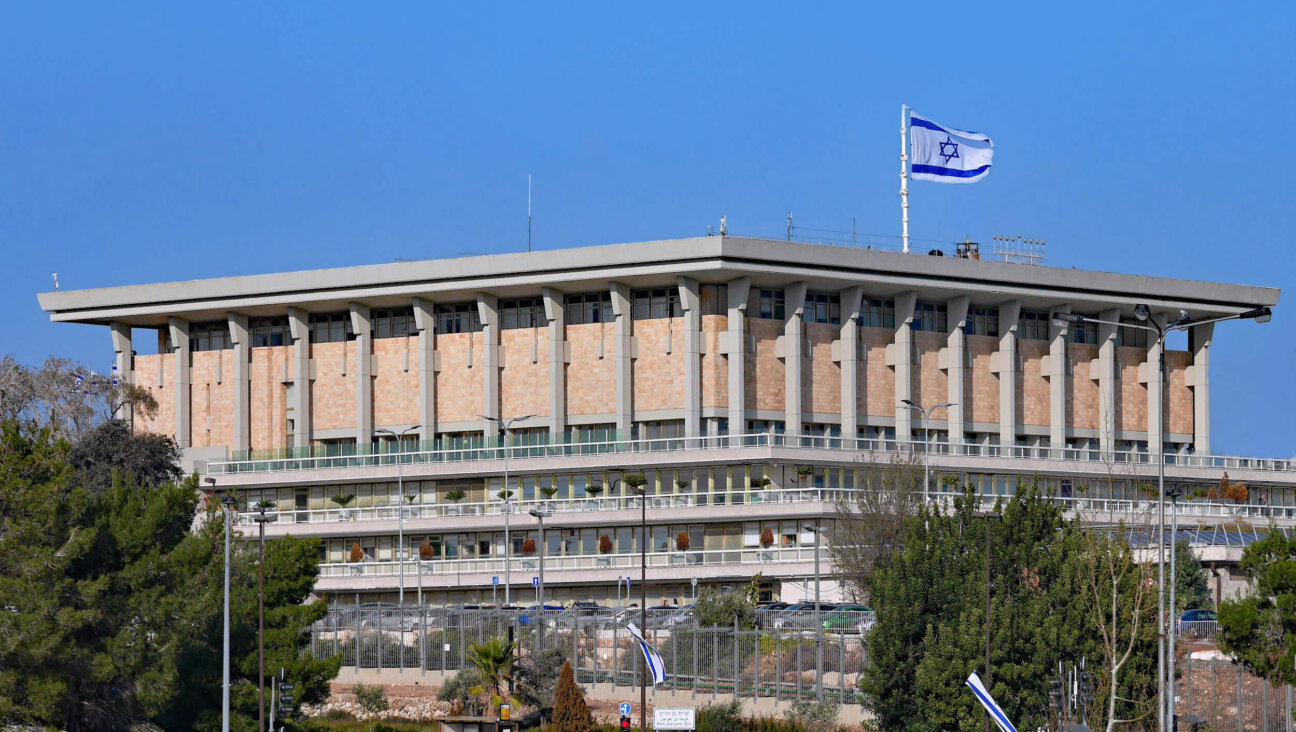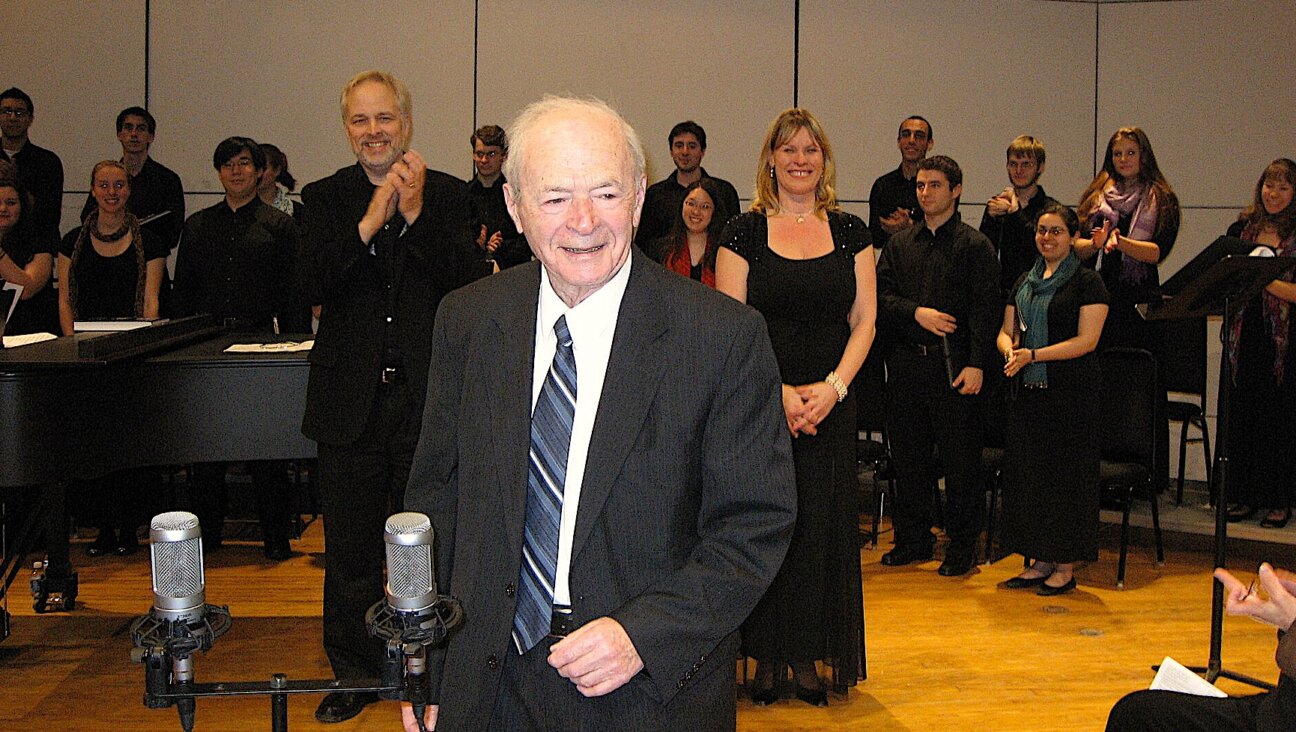Why Recognizing Israel as ‘Jewish State’ Is Key to Peace

Image by getty images
It often happens in sensitive negotiations between longtime adversaries. At a certain point they start talking in code.
Silent looks, secret words, raised eyebrows — messages only they understand. The baffled mediator stops everything and says, “Hey, what’s going on between you two?”
That’s how you know the most serious issues are finally on the table.
We have reached that moment in the talks between Israelis and Palestinians, and it is taking place around the words “Jewish state.”
Seemingly out of nowhere, questions over Jerusalem, settlements, borders, security and refugees have been eclipsed by something that seems entirely symbolic: Will the Palestinians recognize that Israel is the national homeland of the Jewish people? The Israelis have declared it a deal breaker, while the Palestinians, with the backing of the Arab League, have rejected it outright.
What is the argument really about?
Symbols have a tendency to be, well, symbolic. In this case, accepting the Jewish state (rather than just a political entity called “Israel”) is understood by both sides to represent the ultimate, public and final abandonment of the long-standing explicit Palestinian goal of eradicating Israel, whether through violence or through the relocation of millions of people of Palestinian descent currently living in refugee camps around the Arab world.
To accept the Jewish state is to create the minimal conditions for an end to the conflict. It is to signal to the Palestinian factions, divisions, functionaries and public, as well as the whole global pro-Palestinian machine, that the era of “resistance” is reaching its end.
Both sides know it, and always have. Indeed, since the very beginning of the Zionist enterprise, rejection of the “Jewish state” idea — whether Jewish in character, in purpose, religiously or demographically, or any other reasonable definition— has always been the real core of the problem.
It was the core of the problem when murderous Arab mobs began attacking unarmed Jewish civilians in the late 19th and early 20th centuries, culminating in the slaughter of the Jewish community in Hebron in 1929.
It was the core of the conflict when the Arab states rejected United Nations Resolution 181 in November 1947, calling for the partition of the land into an “Arab state” and a “Jewish state” — the latter expression appearing over 30 times — leading to the 1948 War of Independence, in which Arab states that didn’t even share a border with Israel felt a need to send their armies to kill the usurping Jews.
It was the core of the conflict when, in 1964 — three years before Israel occupied the West Bank — the Palestine Liberation Organization was founded, declaring the illegality of partition and of Israel itself, with the aim of “elimination of Zionism in Palestine” through “armed struggle.” Thus Yasser Arafat became the godfather of modern terrorism.
It was the core of the conflict when, in 1967, following the failed attempt to destroy Israel in the Six Day War, the Arab leaders issued the infamous “three No’s of Khartoum” — no peace, no recognition, no negotiations with Israel — and when, in 1974, Arafat announced in Cairo his “phased plan” to destroy Israel in stages.
It was the core of the problem when, after the 1993 Oslo Accords were supposed to bring a gradual path to peace, Arafat’s newly constituted Palestinian Authority continued to support and fund terrorist groups, preach hatred rather than peace in the classrooms, transform the refugee camps into armed compounds filled with improvised explosive devices and launch a horrific campaign of suicide bombings in the mid-1990s.
It was the core of the problem when, in the 2001 talks in Taba, Arafat rejected a peace plan from President Clinton that would have given the Palestinians a sovereign state on nearly all the land in the West Bank and Gaza, and instead launched the second intifada, causing thousands of pointless deaths on both sides.
It was the core of the problem when, in 2010, Benjamin Netanyahu called Mahmoud Abbas’s bluff and implemented the first-ever freeze in settlement construction for a period of 10 months. The result? Abbas waited until the freeze was almost expired before coming to the table — proving that the conflict was never really about settlements, after all.
And it is the core of the conflict today, when it appears Abbas has rejected every single proposal put forth by Secretary of State John Kerry that involves any recognition of the legitimacy of Israeli concerns — whether demographic, heritage or security.
Rejection of the Jewish state has always been the core of the conflict. It’s worth noting that those Arab leaders who made significant gestures toward ending rejection — like Egypt’s Anwar Sadat and Jordan’s King Hussein — were able to reach peace agreements with Israel in the blink of an eye. It was never Israel that stood in the way of peace.
Rejectionism is the problem, nothing else. Unless, of course, you believe that rejectionism is, in its essence, justified — that all the hatred, all the boycotts, all the violence against Israeli children and civilians, is all a “natural response” to the original sin of “occupation,” meaning of Israel itself. That 1948 justifies it all. If this is what you believe, then say so. But speak not of settlements, and do not pretend to have peaceful aims.
If Zionism is the belief that the Jews have a right to a healthy, thriving democratic state of their own, then anti-Zionism is the repudiation of that right, and gets the ball rolling on all the other rejectionisms, including that of Abbas today. There is no middle ground; either you grant the Jews their place among the nations, or you don’t.
Both sides know that without mutual legitimation and acceptance, publicly and formally, there can be no peace. The Palestinians themselves have always demanded such recognition — which is why the “Jordanian option” of subsuming the Palestinian territory into the neighboring kingdom has been off the table for years.
But recognition is a two-way street, and Israel will forever insist on it, as well. It’s not about psychological insecurity. It’s not that Israelis need the affirmation of the other side in order to feel good about themselves. It’s because the only way to confirm that this thing is really over — and that the agreement won’t be another catastrophic failure, like Oslo — is for recognition to replace rejection, not to live alongside it in some ambiguous cloud of diplomatic nicety. Not to dilute it by saying, “Yes, but also right of return,” or, “Yes, but also right to resistance.” But clear, categorical, overriding.
Anything short of that is just more posturing, more blood and tears.
David Hazony is the editor of The Tower Magazine and is a contributing editor to the Forward.















